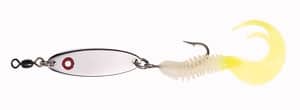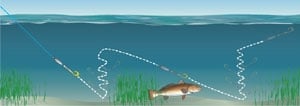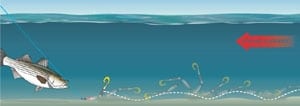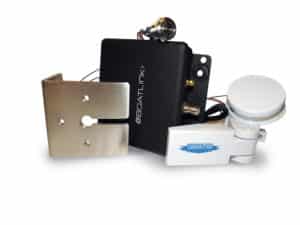
Wild Wobblers

Wild Wobblers
Cast the spoon over grass beds in water where you can see sand holes—choice spots for feeding gamefish. Start the retrieve and, when the spoon comes over the open hole, stop and allow it to flutter-fall with a tight line. When the lure hits the bottom, retrieve again, up and over the grass, to another sand hole and repeat. Pete Sucheski

Wild Wobblers
This is a deadly tactic for feeding striped bass, redfish, seatrout, snook, tarpon and many other species. Frequently, the biggest fish hold deep, and eat dead and dying baits that sink to the bottom. Cast the spoon upcurrent then reel in the slack and allow the lure to sink and tumble along the bottom. Hits can be subtle, so pay attention. Pete Sucheski

Wild Wobblers
When surface schoolers (Spanish and cero mackerel, bluefish, etc.) are crashing baitfish, few lures work better than a spoon fished fast. Many anglers whip their rods in a rhythmic cadence, retrieving the lure quickly to keep slack out of the line. Cast beyond the fish, let the spoon sink a foot or two and begin a snappy, whippy retrieve. Pete Sucheski









